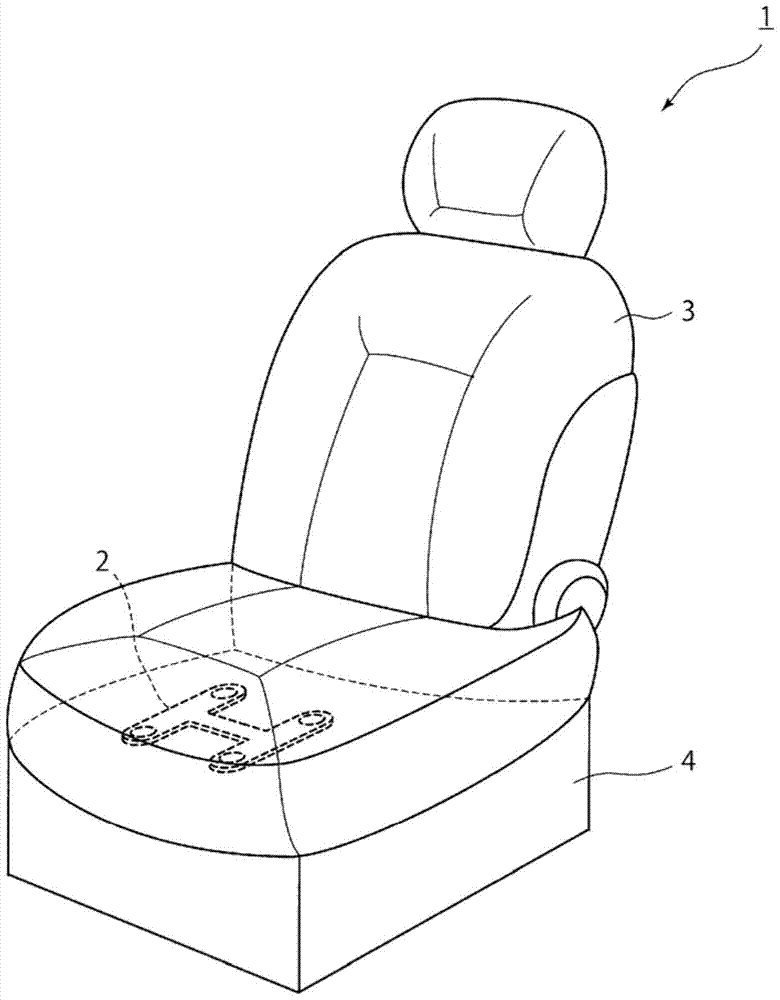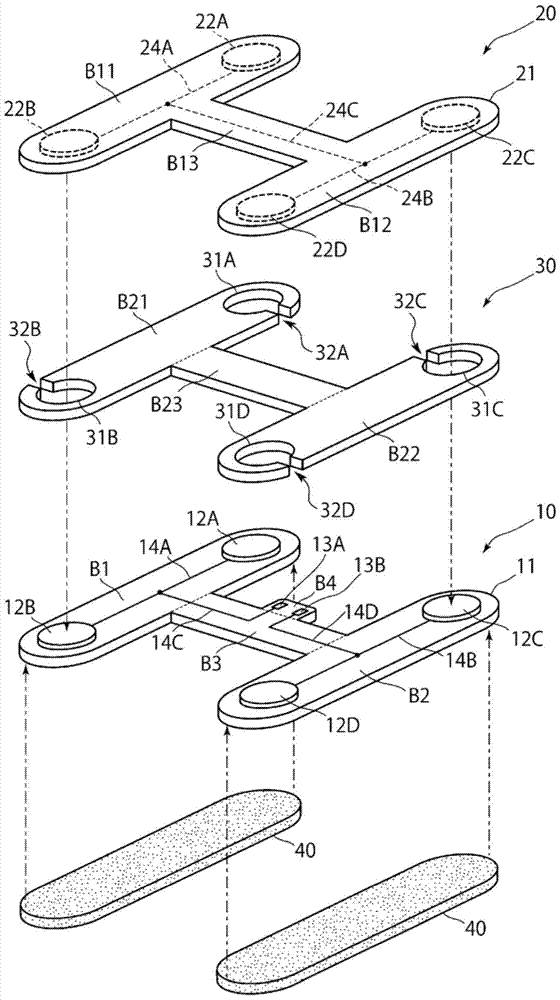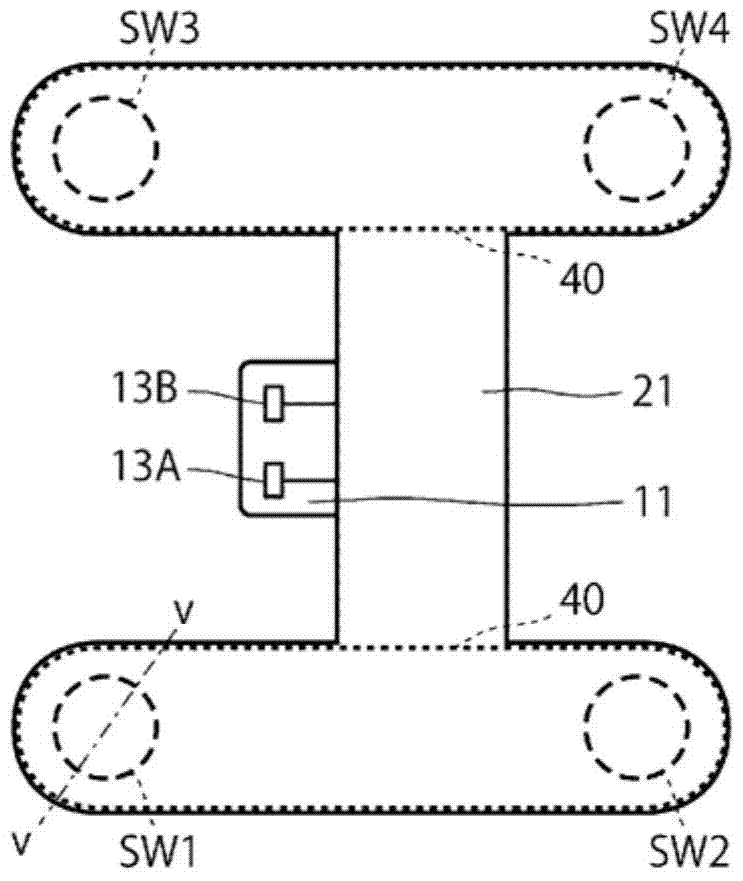Seat device
A technology of a seat and a pressure-sensitive switch, applied in the field of seat devices, can solve the problems of being different, unable to properly detect the load, complex structure of the seat device, etc., and achieve the effect of a simple structure
- Summary
- Abstract
- Description
- Claims
- Application Information
AI Technical Summary
Problems solved by technology
Method used
Image
Examples
no. 2 Embodiment approach
[0117] Next, a preferred second embodiment of the seat device according to the present invention will be described in detail with reference to the drawings. Among the constituent elements of the seat device of the second embodiment, the same or equivalent constituent elements as those of the first embodiment are denoted by the same reference numerals, and overlapping descriptions are appropriately omitted.
[0118] Figure 12 It is a figure which shows the seating sensor in 2nd Embodiment. Such as Figure 12 As shown, the seat device in this embodiment includes a seating sensor 70 as a component instead of the seating sensor 2 of the first embodiment.
[0119] Specifically, the seat occupancy sensor 70 has a structure in which the first sensor unit 71 and the second sensor unit 72 are electrically and mechanically connected by a cable 73 .
[0120] In the first sensor section 71, the figure 2 The shown main block B1 portion of the first insulating plate 11, the main block...
no. 3 Embodiment approach
[0140] Next, a preferred third embodiment of the seat device of the present invention will be described in detail with reference to the drawings. Among the constituent elements of the seat device according to the third embodiment, the same or equivalent constituent elements as those in the above-mentioned embodiment are denoted by the same reference numerals, and overlapping descriptions are appropriately omitted.
[0141] The seat device in the third embodiment differs from the seat device 1 in the first embodiment in that a mounting member different from the seat base 4 is included as a component.
[0142] Fig. 16(A) and Fig. 16(B) are diagrams showing a mounting member of the third embodiment. As shown in FIG. 16(A) and FIG. 16(B), the mounting member of this embodiment has a seat frame 91 and a plurality of springs 92 .
[0143] The seat frame 91 is formed into a frame structure including a front frame member 91a arranged as a frame of a front part, a rear frame member 91...
PUM
 Login to View More
Login to View More Abstract
Description
Claims
Application Information
 Login to View More
Login to View More - R&D
- Intellectual Property
- Life Sciences
- Materials
- Tech Scout
- Unparalleled Data Quality
- Higher Quality Content
- 60% Fewer Hallucinations
Browse by: Latest US Patents, China's latest patents, Technical Efficacy Thesaurus, Application Domain, Technology Topic, Popular Technical Reports.
© 2025 PatSnap. All rights reserved.Legal|Privacy policy|Modern Slavery Act Transparency Statement|Sitemap|About US| Contact US: help@patsnap.com



